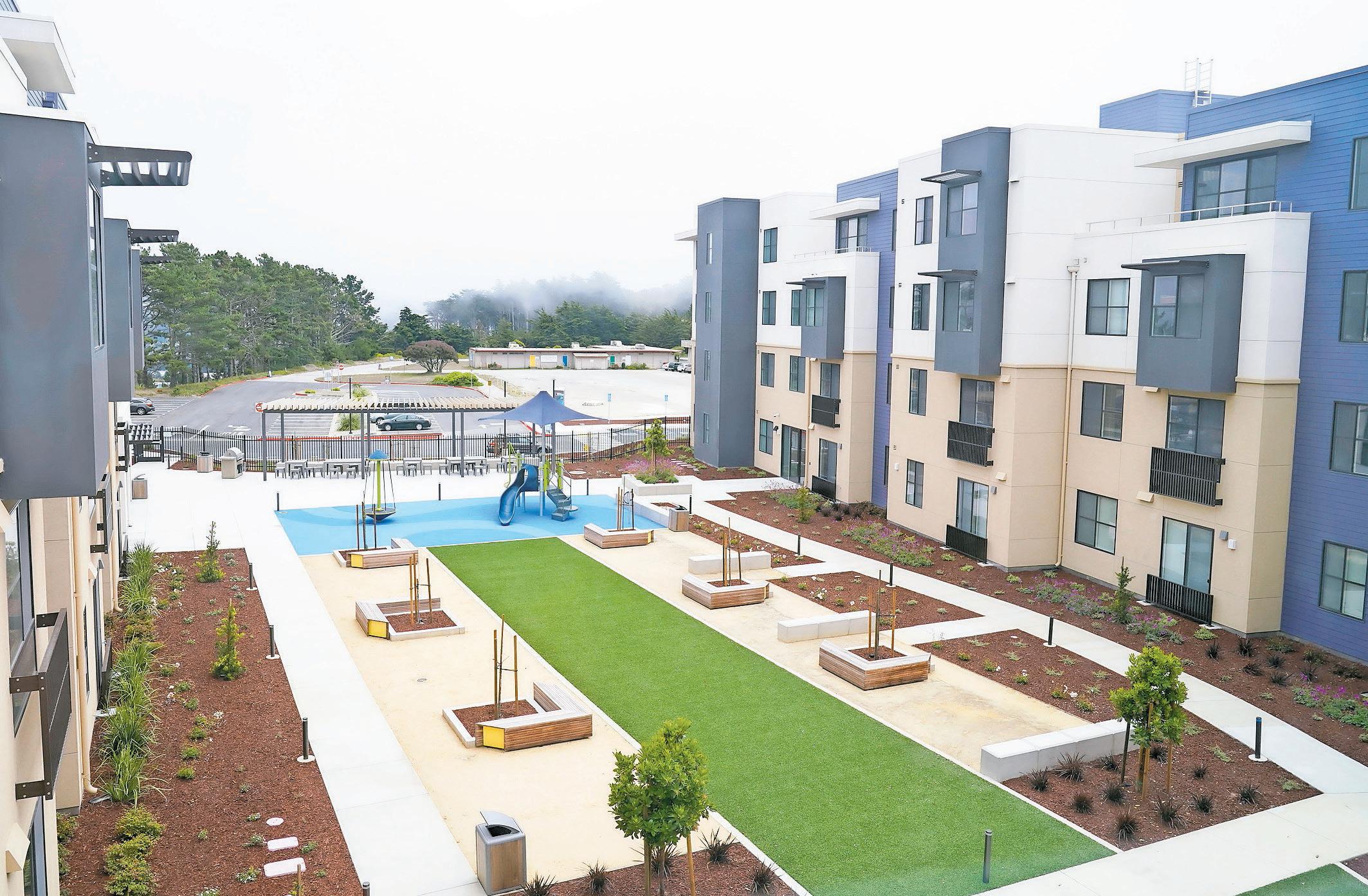
10 minute read
CrypTo CurrenCy for The masses
In fact,
Cryptomoneda Pa’l Pueblo, is a gathering of volunteers that believe that crypto is one of the most significant technological advancements that will influence everyone’s life.
Advertisement
Cryptomoneda Pa’l Pueblo
Grassroots educational group focuses on bringing together Puerto Rico and the international crypto community
Zoe Landi Fontana, The Weekly Journal
You’re standing in front of a food truck in Yauco, falafel in hand. “Cash, card, or crypto?” asks the truck’s owner. You think to yourself, “what, this must be .0000001 of a bitcoin, right?”
Outlandish as it may seem, Prof. Raúl Moris’s foodtruck, which does sell falafel, accepts crypto as payment. It goes along with the rest of his educational mission to get Puerto Ricans into the new technology on their own terms, inspired by the Cordero siblings of the 1800s who ran free social and racially integrated schools to improve literacy rates decades before slavery was even abolished and federally funded schools were established.
Carrying on their legacy, “Cryptomoneda Pa’l Pueblo” — otherwise known as Crypto for the People by the People (CCPALPUEBLO) — is an outreach program to bring together Puerto Rico and global crypto know-how. They are, as stated on their website, “…a hybrid community reconstruction, economic, development, educational event, which brings together Puerto Rico and World Crypto talent in blockchain, ledger and programming. It’s doing what crypto was created for, to help the People”.
Professor Moris is a social worker, graphic designer, and also has a Masters’ degree in demography. Over the past two years he has gotten involved in the island’s growing crypto community.
Their group, Cryptomoneda Pa’l Pueblo, is a gathering of volunteers that believe that crypto is one of the most significant technological advancements that, in some time, will influence absolutely everyone’s life. “[Most] of our knowledge is imposed – social media, the internet,
technology –it’s imposed on us. It comes from above, and we use it as part of our life, but we don’t understand the reasons or outcomes of something so powerful,” Moris said.
People participate in the Cryptomoneda Pa’l Pueblo events because they believe in the importance of the underlying technology. “We are volunteers, we don’t have anybody or anything to sponsor us. Because of that we can say whatever we want to say without hurting people’s feelings or wallets,” explained Moris. Although the group has been suffering low attendance rates at their meet-ups over the past few months due to the crypto crash and bear market, they are still committed to educating everyday people. Part of their outreach includes visiting plazas and having these talks in public places, bringing education to community members who might otherwise not pursue an interest in this area. They frequent the Plaza de Guánica, where the Cryptomoneda Pa’l Pueblo group talks with the people who show up, discussing what crypto is and how it can be a part of people’s life.
The Role Of The Diaspora
Another effort of theirs is the Crypto Repatriation project, led by a diaspora member who moved to the island a month ago and is documenting her experience on how to benefit from crypto and blockchain technologies. The diaspora has played a key role in the success of Cryptomoneda Pa’l Pueblo. “We are running our first online course – it’s a free course sponsored by diaspora. They contribute when we need them and have been key in our survival – not only for this, but historically,” said Moris. Local and federal governments are slow and inefficient in bringing aid to Puerto Rico, especially after Hurricane Maria. Celebrity diaspora, like Ricky Martin and Calle13, as well as community centers in New York and Chicago started sending money to support their family and communities back home. With over seven million Boricuas living outside the island, there is a big opportunity to include them in building a community-based crypto program. “We want our diaspora to come back home,” Moris reiterated.
Prof. Raúl Moris

The St. Regis Bahía Resort in Río Grande.
Leisure travel is making a strong comeback
Travel & Leisure magazine rated PR’s top five hotels
Madison Choudhry, Special to The Weekly Journal
After the crippling experience of Hurricane Maria in 2017, the restrictions imposed by the Covid-19 pandemic over the last two years, and the ongoing financial concerns, the tourism industry in Puerto Rico has rebounded in record time. But, even during those challenging times the Puerto Rican hospitality sector has stood resolute.
A recent survey by Destination Analysts –The State of the American Traveler– corroborated that despite the current impact on travel demands caused by financial and international political concerns, there are positive indications that travelers still have an interest in planning out future vacations. Nearly twothirds (61.8%) of those surveyed reported leisure travel will be an extremely high or high priority when budgeting for the near future. This is the highest number reported since last summer. Travel & Leisure magazine president Michael D. Brown has gone as far as to exclaim, “leisure travel is back.”
Some of Puerto Rico’s main attractions are the ease of traveling from the U.S. mainland, its vibrant culture, and gorgeous beaches and natural landscapes. Puerto Rico is a top destination for many American and international travelers.
Amid this positive development for the tourism industry, Travel & Leisure have released the Puerto Rico’s top five resorts, based on its readers experiences and opinions.
The Resorts
At the top of its list is the Ritz-Carlton Reserve in Dorado. With its sprawling 50 acres on the northern coast of Puerto Rico, this resort received the top score of 91.63 out of 100 points. The St. Regis Bahía Beach Resort, the first five-star and five-diamond hotel in Puerto Rico, came in a very close second place with a score of 91.13. Notably, this is the twelfth year in a row that this property has been awarded by Travel & Leisure. “We are honored to receive this recognition again from the prestigious travel magazine Travel & Leisure, above all because it reflects the opinion of those who have been our guests during the past year. That is our greatest satisfaction and that is why I share this award with the extraordinary group of professionals who make it all possible”, said José M. Torres, general manager of The St. Regis Bahía Beach Resort
The Condado Ocean Club’s adult ambiance, modern design and iconic infinity pool,
In fact, complemented by its SOCIAL Restaurant, highlight Puerto Rico’s nightlife. Inaugurated in 2021, the hotel scored 90.44 points. The Historic Vanderbilt hotel in Condado, A recent survey by Destination Analysts corroborated there are positive indications that travelers still have an interest in planning out future vacations. originally built in 1919 and restored to match it grandeur reputation scored 88.60 points. “We are proud to once again be part of this distinguished group of hotels that represent the best of the hospitality industry in Puerto Rico. For the Condado Vanderbilt hotel, this is an accomplishment that we have achieved as a team and in which each component plays an important role. Our commitment is to continue forward, providing our guests with outstanding service, from a great hotel”, said Ben Tutt, general manager of The Vanderbilt. In fifth place is the Hyatt Regency Grand Reserve Puerto Rico located in Rio Grande. A family-friendly resort with a backdrop of the iconic El Yunque rainforest, the hotel scored 88.0 points.
Ben Tutt, general manager The Vanderbilt Hotel
These housing complexes are rare, but expected to increase
Janie Har – The Associated Press
DALY CITY, Calif. (AP) — San Francisco Bay Area high school teacher Lisa Raskin moved out of a cramped apartment she was sharing with a roommate and into her own place this month, paying a deeply discounted $1,500 a month for a one-bedroom with expansive views within walking distance to work.
It was once an impossible dream in an exorbitantly priced region hostile to new housing. But her employer, a 4,000-student school district south of San Francisco, was the rare success story in the struggle to provide affordable housing and in May, it opened 122 apartments for teachers and staff.
“I have a sense of community, which I think is more valuable than anything else,” the 41-yearold San Francisco native said. “More districts really need to consider this model. I think it shows educators that they value them.” The Jefferson Union High School District in San
Mateo County’s Daly City is among just a handful of places in the country with educator housing. But with a national teacher shortage and rapidly rising rents, the working-class district could serve as a harbinger as schools across the U.S. seek to attract and retain educators.
“This is absolutely a solution for other districts. As we’ve gone through the process, we’ve learned of so many other districts interested in doing what we’ve done,” said Andrew Lie, a school board trustee. “For us to be at the front end of this new wave of teacher and staff housing is actually pretty exciting.”
Teachers were traveling “hours and hours to get to school and back,” said Randi Weingarten, AFT union president. “So this became an idea to spark economic development and to create housing.” Jeff Vincent, co-founder and director of the
Center for Cities & Schools at the University of California, Berkeley, said such housing complexes are rare, but he expects more school districts to explore the concept given the benefits of teachers living in the communities where they work, so they can get to know students and families better. But such projects face obstacles, including pushback from residents. Vincent urges districts to be cautious. “One of the biggest barriers is the need for people to think outside the box,” he said. “There are skeptics of whether schools should be doing this with their land.” Roughly a quarter of the 500 employees at Jefferson Union were resigning or retiring every year and the district, where teacher salaries for the 2022-23 year start at $60,000, could
In fact, not compete with wealthier schools that pay new teachers $76,000 or more. Only 20% of homes for sale across major U.S. metro areas were affordable on an average teacher’s salary, down from 34% in 2012. So in 2017-2018, officials came up with a plan to address recruitment and retention, including a $75 million housing complex for teachers and staff financed in part by a $30 million bond measure approved by voters in 2018. The district also has a more ambitious plan to lease school property for a 1,200-unit development that would mix retail with market-rate housing and generate revenue to beef up teacher salaries. But the Sierra Club’s local chapter and others have expressed objections. They want more units at below-market rents and taller buildings to preserve more open space, including a decades-old garden scheduled for razing. So far, the district is opposed to those changes,
The school district in San Mateo County is among just a handful of places in the country with educator housing. >AP Photo/ Godofredo A. Vásquez
inflaming critics.
“It’s terrible the schools have to come up with schemes to build housing to pay teachers,” said Gladwyn d’Souza, a Sierra Club member who supports workforce housing but says there should be more homes for everyone.
Tenants at the school district complex can stay up to five years, hopefully using the time to save up for a down payment on a house. But those too are becoming more difficult to buy. A 2016 study by Redfin found that only 20% of homes for sale across major U.S. metro areas were affordable on an average teacher’s salary of $62,800, down from 34% in 2012. In California, the 2016 study found only 17% of homes were affordable on the average state teacher salary of roughly $74,000, down from 30% in 2012. The average teacher could afford 0.2% of homes in San Francisco and none in Silicon Valley, where the median sales price of a home was $1.5 million in June.





